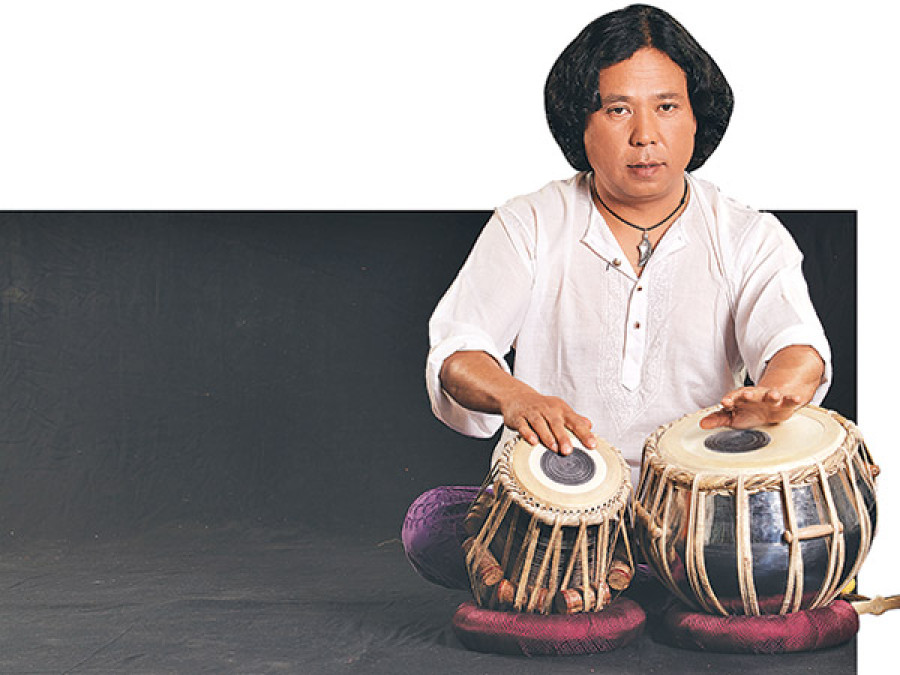Entertainment
Of many worlds
Tabla maestro Navaraj Gurung’s music is an amalgam of different styles from around the world
Priyanka Shrestha
Gurung cannot precisely recall how and when he fell in love with the instrument. But he says that his tabla lessons began very early with his father, maestro Ram Hari Gurung, acting as his first teacher. And as he grew older, his friends helped him pick up the guitar and start a rock band. But very soon, the instrumentalist realised that his passion for tabla was much greater and ended up quitting the band to become a full-time devotee of the instrument. Gurung went on to complete his master’s in music from India and then formed Trikaal, one of the most popular Nepali fusion bands.
It has already been three decades now that Gurung has been playing tabla and composing music. His debut album, Moment, was launched in 2000 and since then, he has released 25 albums, ranging from the genres of eastern classical music to compilations of fusion tracks to tabla solos.
Among the records he has released, Taal Vidya, a tabla solo album, has been seminal in establishing him as one of the most talented tabla players in the country. Another remarkable work by Gurung is the self-titled album of his project band Urjazz. It consists of seven eastern classical melodies cleverly fused with jazz. The sound of the saxophone and tabla playing together is something very new, especially to the Nepali audience. But the commendable aspect of the record is that the two very contrasting instruments do not beg for individual attention and are woven together quite well.
Versatility is Gurung’s primary trait. The artist’s bhajan album Samarpan is an instrumental take on famous Hindu religious songs like Gayetri Mantra and Om Jai Jagdish. While these bhajans are famous for their weight of words, Gurung’s take on them reminds us of the occult power of melody alone. Fusion Dreams 2, on the other hand, is an eclectic mix of various genres fused together. While the song Africa is an upbeat melody that is an amalgam of African tribal music and the local music styles here, Urban, another track from the album, has a more universal feel to it.
Such an assorted range of sounds that Gurung composes can probably be attributed to his travels.
Gurung has travelled to more than 15 countries till date, primarily for live performances, and says that travelling outside of the country provides perfect opportunities for him to create music. The new land and its sounds inspire him, along with the memories of his home and family.
Gurung’s latest work, Shanti Sutra, is yet another example of the cosmopolitan nature of his music. And like his other works, Gurung composed the pieces for this album while he was in Spain on tour.
The title track of this album is a soft, slow-progressing, composition. According to the artist, the song celebrates the path to achieving peace. The sounds of the flute and saxophone are melancholic and soulful. But the fourth track, Romantic Experience, is very different, since it is inspired by the qawwali style of music. Nevertheless, the track infuses Nepali folk duet influences, which makes it all the more interesting.
It becomes difficult to categorise an artist like Gurung into one fixed genre, as he experiments with so many styles from around the world. But I guess this is the beauty of his music.
I suppose I was wrong when I first thought his music could help me understand eastern classical music better. His music is so much more than that. For me, it has brought together the snippets of music from around the world.




 6.12°C Kathmandu
6.12°C Kathmandu










